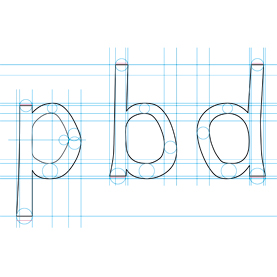I must say I love Frank Llyod Wright and his design the same way Meggs does. On a recent trip to Chicago for business last week, I was reminded of his influence on architecture and design. Two years ago, on another trip to Chicago, I was fortunate enough to take a tour of his home and design studio in Oak, Park IL. I had very little knowledge of Wright and his influence on design previously. The tour provided a window into how Wright's impact on the world, and reading chapter 12 of
Megg's History of Graphic Design helped me to connect Wright to the prevailing movements of design during the late nineteenth and early twentieth century. In fact, I liked how Meggs put Frank Lloyd Wright at the beginning of chapter 12, entitled "The Genesis of Twentieth Century Design." I believe this means that Meggs has a special place for Wright for his influence on twentieth century design and I'd even suggest that she believes he was one of the prominent leaders at the forefront of the new movement bridging the way from art nouveau to modern design of this past century. Meggs writing that "At the turn of the century he was at the forefront of the emerging modern movement" on page 233 pretty much sums it up!
One of the aspects I love about Wright's design is that it was one of the first design movements that had his origin straight from the United States. Unlike other design movements like art nouveau that had its origins in Europe and Asia, Wright's design principals was purely American. (Although he did still draw some of his inspiration from the French rationalist writings of Eugene Viollet-le-Duc, the British Arts and Crafts movement, Japanese architecture, and pre-Columbian art, most would say that Wright's style is still uniquely American). His style later spread across the globe to Europe and started a new era of design where America became the new origin of design influence. Wright caused others around the world to draw inspiration from America, placing us as leaders in the design world.
Wright design was actually very radical during his time. He rejected historicism in favor of "organic architecture." He placed direct emphasis on the interior spaces of buildings. He had this unique way of combining his buildings with the surrounding landscape. Since he hailed from the flat prairies of the midwest, it would then make sense that he would like using very flat long horizontal lines that resembled the environment where his buildings existed. He loved space and you can see this in the spacious interiors of his buildings. Wright also had a deep love and knowledge of nature, probably one of the first to lead the cause for environmentally friendly buildings. He especially placed a lot of attention to the lighting, heating and climate control of the buildings he designed. Wright once said that "The good building makes the landscape more beautiful than it was before the building was built.” This was the start of the "Organic Architecture" movement.
Below are examples of his style of architecture where you can see the prevailing long horizontal lines of his "Prairie House" style.
 |
| Photo of Frank Lloyd Wright's Studio I took on a tour in Oak Park, IL in 2010. Notice the long horizontal and vertical lines. |
 |
| Photo of a house in Oak Park, IL that I took exhibiting Frank Lloyd Write's Prairie House architectural style |
 |
| No, this is not in the mid-West. This Prairie House style home is found in San Jose, CA (source: http://photos.mercurynews.com/2012/07/20/prairie-style-homes-still-turning-heads/#2) |
 |
| Fallingwater, by Wright. Source: http://upload.wikimedia.org/wikipedia/commons/f/f6/FallingwaterWright.jpg |
Wright used many mathematical concepts in his design and architecture. Of course, being educated in engineering at the University of Wisconsin, Madison helped. (Although he had to drop out to pursue a career in architecture). We see many of his design containing geometric shapes, often repeating lines and in both symmetric and asymmetric patterns. On the tour in Oak Park, I heard this was because of his fascination with the wood blocks used to educate children in mathematical concepts in German Kindergartens. Many of these geometric patterns were apparent in his print and architectural designs. Some of them were simple, but others were extremely complex with many repeating patterns. Below are some examples of his intricate design patterns found in both print and in his architecture.
 |
| Source: http://www.curbly.com/uploads/photos/0000/0001/0392/Frank-Lloyd-Wright_large.jpg |
 |
| Source: http://www.scottishstainedglass.com/wp-content/uploads/2010/11/frank-lloyd-wright-stained-glass-designs-large.jpg |
 |
| Source: http://frank-lloyd-wright.visit-chicago-illinois.com/frank-lloyd-wright-robie-livingroom.jpg |
 |
| Source: http://images.monstermarketplace.com/jewelry-gifts-and-home-accessories/frank-lloyd-wright-rug-designs-coasters-set-283x288.jpg |
Wright later worked under Sullivan, which was Chicago's most progressive architect at that time, who had strong influence on him. At the age of 26, Wright begin his own practice where he designed numerous homes, buildings, furniture, and interiors. Some of Wrights most famously known styles include the Prairie House Style, textile block houses often found in California, Mature Organic style, and Usonian Houses.
I would one day love to own a Frank Lloyd Wright inspired home emphasizing the surround environment, with design-focused interiors, and repeating patterns.
Sources:
Megg's History of Graphics Design
http://en.wikipedia.org/wiki/Frank_Lloyd_Wright
http://www.pbs.org/flw/legacy/essay1.html





